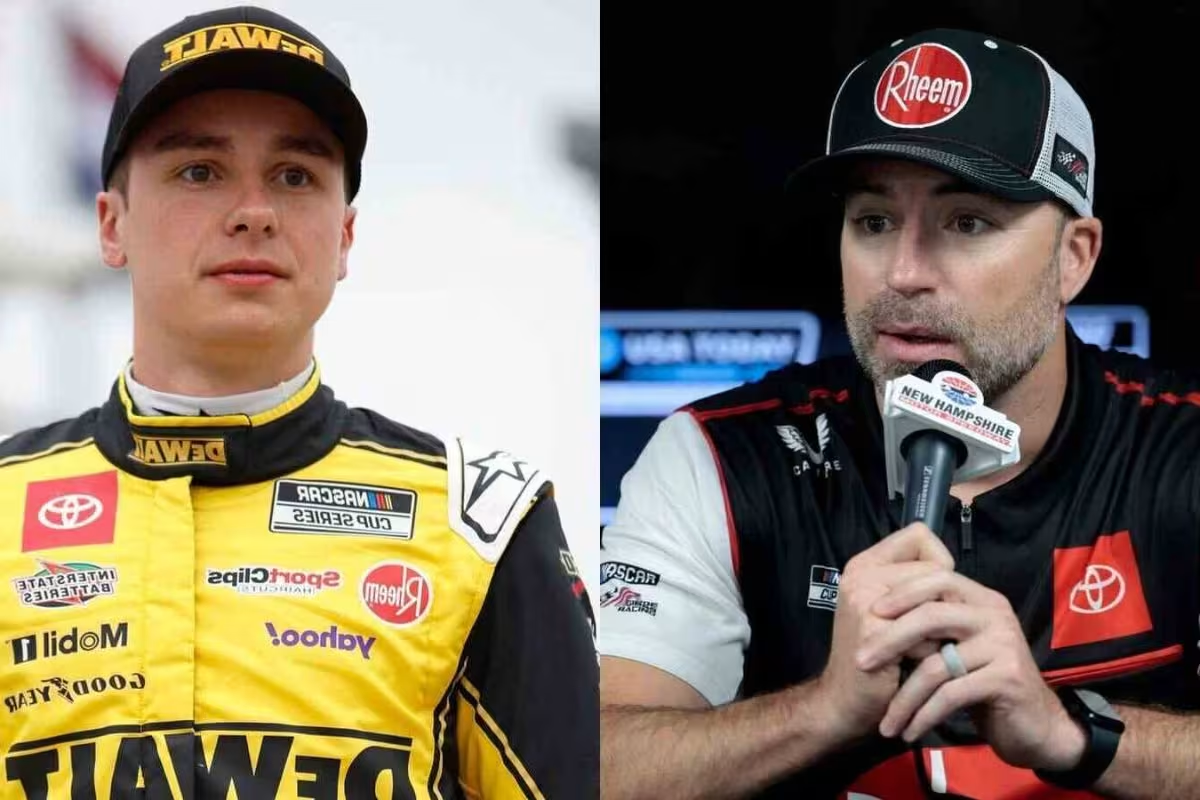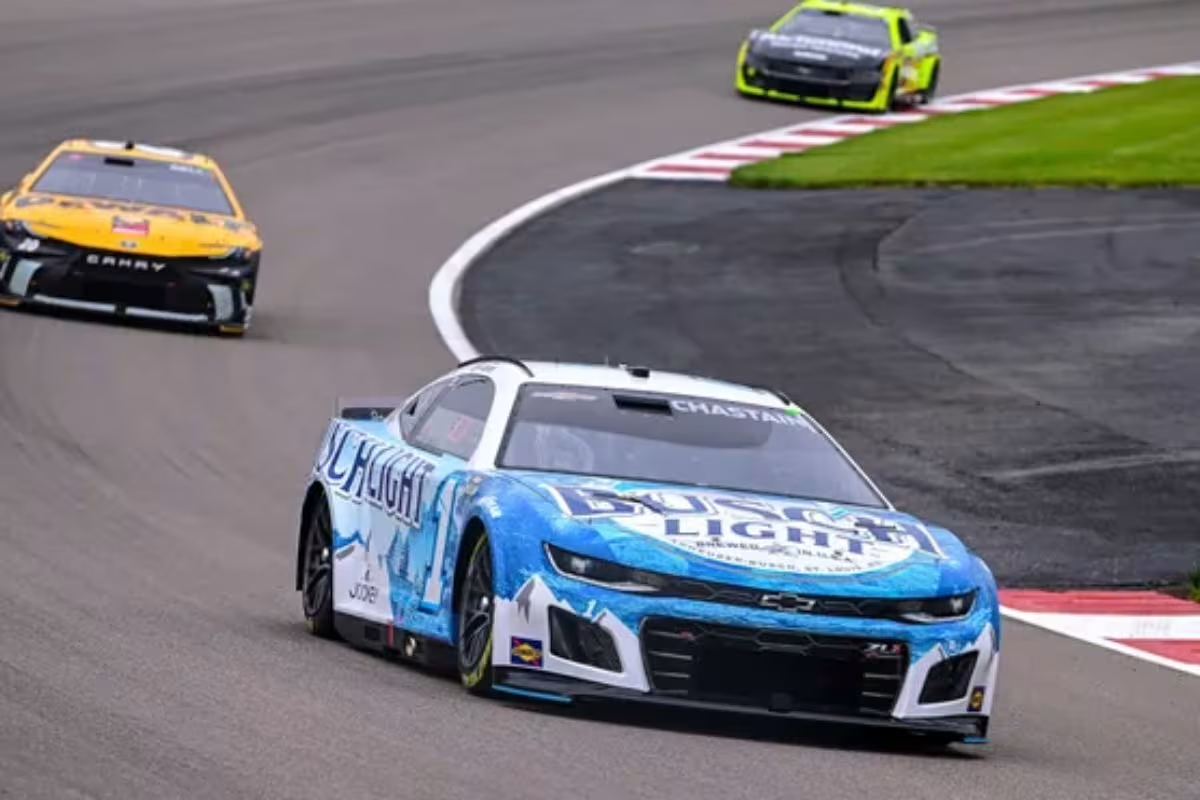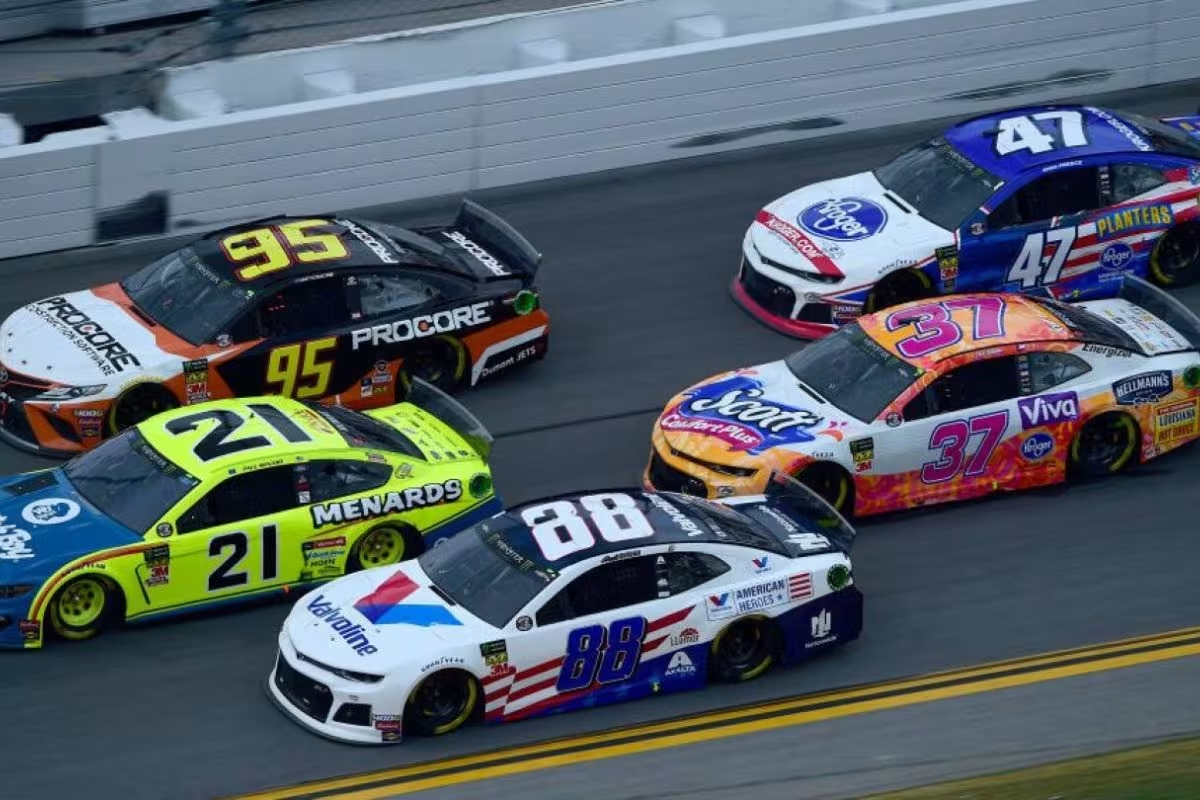Christopher Bell’s Crew Chief Unleashes Fury: Christopher Bell‘s crew chief recently voiced frustration regarding the confusion coming from NASCAR’s sudden rule changes, particularly related to the Damaged Vehicle Policy. The lack of clear communication surrounding these changes has raised questions about the competitive integrity of the sport. Following a major crash at Talladega, where 28 cars were affected, NASCAR’s deviation from established guidelines regarding repairs during a red flag exacerbated tensions.
Key Highlights
- Christopher Bell’s crew chief expressed frustration over sudden rule changes, emphasizing the lack of prior communication from NASCAR.
- The abrupt alteration to the Damaged Vehicle Policy (DVP) created confusion among teams during the YellaWood 500.
- Teams felt blindsided by the enforcement of new rules, leading to distrust in NASCAR’s decision-making process.
- The crew chief criticized the inconsistency in rule application, fearing it undermines competitive integrity and fairness.
- Clear communication and transparency were deemed essential for restoring confidence among teams and drivers in NASCAR’s governance.
The Damaged Vehicle Policy Controversy
The recent incident involving the NASCAR Damaged Vehicle Policy (DVP) exemplifies the profound ramifications of such oversight.
As crews prepared for the YellaWood 500, the announcement of a change to the DVP went uncommunicated, leaving teams ill-equipped to navigate the complexities of the new regulations. The DVP is designed to prevent damaged vehicles from re-entering the race if they fail to meet minimum speed thresholds, thereby ensuring safety and competitive integrity.
However, at Talladega on October 6, the application of this policy became contentious. Following a major crash, NASCAR officials seemingly deviated from the established guidelines by permitting teams to repair their vehicles during a red flag situation.
This inconsistency raised questions about the enforcement of the DVP and emphasized the potential for selective application of rules under pressure.
In an environment where split-second decisions can dictate race outcomes, the failure to relay critical information erodes team confidence and undermines the competitive landscape.
With the stakes at such a high level, clear and consistent communication from NASCAR is paramount. The fallout from this controversy may lead to broader discussions about governance and transparency in NASCAR.
Reactions from Teams and Drivers
Many teams and drivers expressed their frustration and confusion regarding the abrupt changes to the Damaged Vehicle Policy (DVP) during the YellaWood 500. The lack of communication surrounding these important alterations has left many feeling blindsided.
Adam Stevens lamented the departure from established rules that had been consistently applied over the years. His assertion that teams were caught off guard resonates with many in NASCAR’s governance.
“I don’t have any clue what the rule is going forward, That was all blown up this weekend. I could tell you what the rule has been. The rule has been if you’re involved in an incident and you can’t drive it back, you were out of the race. I was a victim of that a dozen times in my career. You know, recent years that that has been the rule. We saw it with the 12 at Watkins Glen. We saw it with 4 at Kansas.”-(ada)
“And I mean, every week you could probably pick a car that’s been a victim of that. And then this weekend that wasn’t the case. There was nothing communicated, to me, to my team or anybody in the walls of Joe Gibbs racing that that was going to change. So that doesn’t seem, I don’t know, something doesn’t seem right. It doesn’t sit right with me that that just changed on the fly and wasn’t communicated to the teams,”-(bell)
Christopher Bell’s Performance at Talladega
The recent upheaval in NASCAR’s rules, particularly concerning the Damaged Vehicle Policy, has cast a shadow over the competitive environment, yet Christopher Bell’s performance at Talladega stands out as a demonstration of resilience amid uncertainty. Bell showcased his driving expertise by finishing sixth, a position that highlights his ability to navigate the complexities of superspeedway racing.
Bell’s race plan was marked by adaptability. He finished the initial stage in fifth place, recovering remarkably from his early setback. However, the following stage proved challenging as he fell out of the drafting pack, which is critical at Talladega. His fortune turned during the concluding stage, where he skillfully avoided a major 28-car wreck that reshaped the race’s dynamic. Running P19 at the time, Bell’s situational awareness and instinct allowed him to escape contact, thereby preserving his vehicle for a strong finish.
Christopher Bell is all but locked in and feels good about the Roval now because of it
And the racing?
"I loved the racing at Bristol and the fans hated it. I thought this wasn't good so we'll see what the fans think." pic.twitter.com/yT5luL5GqE
— Matt Weaver (@MattWeaverRA) October 6, 2024
Reflections on the Race
One might say that Christopher Bell’s reflections on his performance at Talladega encapsulate the unpredictable nature of NASCAR racing, where strategy and luck often intertwine. His candid assessment reveals the complexities drivers face when traversing the race’s inherent uncertainties.
“I feel like I did my part. There’s a lot that goes into these races that are outside of the drivers hands. Stage 1, we started at the back, had to pass through and pretty much all the strategy was out of the window with the yellow flag coming. We were able to make our way to the front score some points, that was really good.”-(BELL)
Bell’s comments highlight the duality of control and chaos in racing. Starting from the back in Stage 1, he showcased resilience by maneuvering through the field, only to face setbacks in Stage 2 when he lost the draft—a critical blow that could have derailed his strategy.
Bell’s experience serves as a powerful reminder that in racing, making every race a unique narrative of success and failure.
News in Brief: Christopher Bell’s Crew Chief Unleashes Fury
The recent criticisms surrounding NASCAR’s Damaged Vehicle Policy highlight a growing discontent among teams and drivers regarding the governance of race regulations. Christopher Bell’s performance at Talladega served as a focal point for these frustrations, reflecting broader concerns within the sport. As rule changes continue to evolve, the requirement for clarity and consistency becomes increasingly paramount to guarantee fair competition and maintain the integrity of NASCAR. Addressing these issues may be crucial for the sport’s future stability.
ALSO READ: Christopher Bell’s Miraculous Talladega Recovery Puts Him on the Brink of Round of 8



